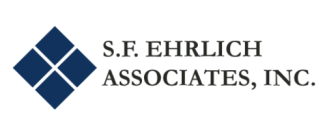
Stan's World - What Inheritance?
February 15, 2020
Over the past few years, a lot has been written about the transfer of inter-generational wealth. The premise is that the Baby Boomers – or even the parents of the Baby Boomers – have amassed significant sums of money that they will not spend during their lifetime. Thus, these mini-fortunes will presumably pass on to their heirs.
But if you’re a Baby Boomer or a member of a younger generation who’s banking on an inheritance to make your financial plan whole, let’s not count those dollars just yet.
In fact, if your own heirs are pegging their retirement plan on your unspent dollars, you may want to suggest that they continue working, as well. Frankly, this is a potentially catastrophic planning problem for all parties concerned.
With our senior populations living longer, portfolios increasingly run the risk of being spent down. In fact, rather than inheriting money from a formerly well-to-do parent, it’s even possible their adult children may have to spend their own money so that they can maintain their parents’ standard of living. Far fetched? Here are two cases that hit close to home.
Case 1: A senior approaching age 98. (Coincidentally, my mother is approaching age 98.) This senior lives in an independent living community in Northern New Jersey with the help of home care aides working 13 hours per day. (Coincidentally, my mother lives…) At 13 hours per day, the annual cost for aides is a mere $118,625. If we increase the aides to 24 hours per day, the math becomes quite impressive: 24 hours x 7 days x 52 weeks x $25/hour = $218,400. A year. And that’s in addition to the monthly fee to live in the community.
I have one sibling. If/when our mother lives long enough to run out of money, how do you think my now 76-year-old retired brother will feel when I tell him we have to split the cost of our mother’s aides so she can continue living where she is? While I’ve never asked my brother if he had any thoughts about the inter-generational transfer of wealth, I doubt he ever considered he may have to pay more than $100,000 per year to support his mother, when he approached 80.
Case 2: My wife’s mother is 98. She lives in a nursing home outside of Philadelphia. Her care costs approximately $9,500/month x 12 months = $114,000. A year. The same math applies to the same family: my wife and me.
Take a minute to do a mental calculation on how quickly mini-fortunes can be spent down with spending rates like those noted above. And if Boomers are expected to live even longer than their parents, how long will their savings last should they require home or nursing care? (What an argument for longevity planning strategies, like long-term care insurance, extending Social Security collection, or fully funding Health Savings Accounts during working years!)
Numbers like these reveal the imperative that you sit down, sooner than later, with: (a) your parents (if still living), and/or (b) your children/heirs, to explain the realities of spend-down for the elderly who may ultimately require additional care due to a longer than anticipated life span. Monetary surprises after retirement can be devastating because the opportunity no longer exists to work longer and recover dollars that were spent unexpectedly.
To those who think investment returns are more important than financial planning, think again. Trying to figure out a path through a murky future is the biggest challenge of all.

